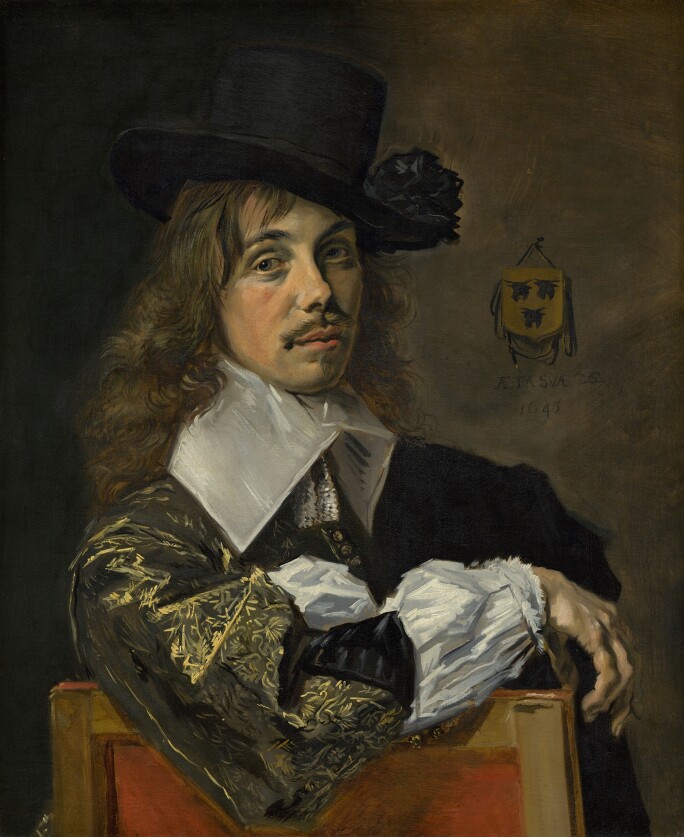When Reynolds painted this elegant portrait in 1784, his reputation as London's leading portraitist was already firmly established. Here, he demonstrates an exceptional sense of painterly freedom and artistic virtuosity, approaching the canvas with an almost impressionistic touch. Set against a neutral, gray background, the sitter, Charlotte Grote (1738-1787), depicted half-length and angled slightly to the left, acknowledges the viewer with a passive gaze. She sports a stylish black coat, a ruffled white blouse with a velvet bow, and an elaborate flat-brimmed hat trimmed with lace and crowned by an energetic heap of silk ribbon. Reynolds conveys the various fabrics and materials with loose, dynamic brushwork, in some passages using a loaded brush and in others dry bristles to create rich, dense textures with remarkable efficiency. The lace border that extends from her hat's brim, for instance, is conveyed with a single, fluid brushstroke whereas her blouse's ruffled fabric, where thick impasto is still visible, is rendered more rapidly. Reynolds’ bravura brushwork and vigorous application of paint used to render Mrs. Grote’s hat recall the technique of Frans Hals, as exemplified in the Dutch master’s portrait of Willem Coymans (fig. 1) in the National Gallery of Art, Washington, D.C.1

The sitter (on occasion recorded as Mary Anne Grote) was the second wife of Andrew Grote (1710-1788), a Bremen merchant and a successful London banker who founded Prescott, Grote, Culverden & Hollingsworth. Multiple sittings for this portrait are recorded in Reynolds' appointment book: on March 11, 16, 22, 29, and May 6, 1784. A payment of £52.10s by "Mrs Groote" is concurrently noted in Reynolds' payment ledger in June 1784. At the same time, Reynolds painted a companion portrait of her husband, bequeathed by his descendants in 1888 to the sitter's bank, where it remained well into the twentieth century.2
1 Inv. no. 1937.1.69, oil on canvas, 77 by 64 cm.
2 See Mannings 2000, vol. I, p. 229, cat. no. 782, vol. II, p. 540, reproduced fig. 1433.